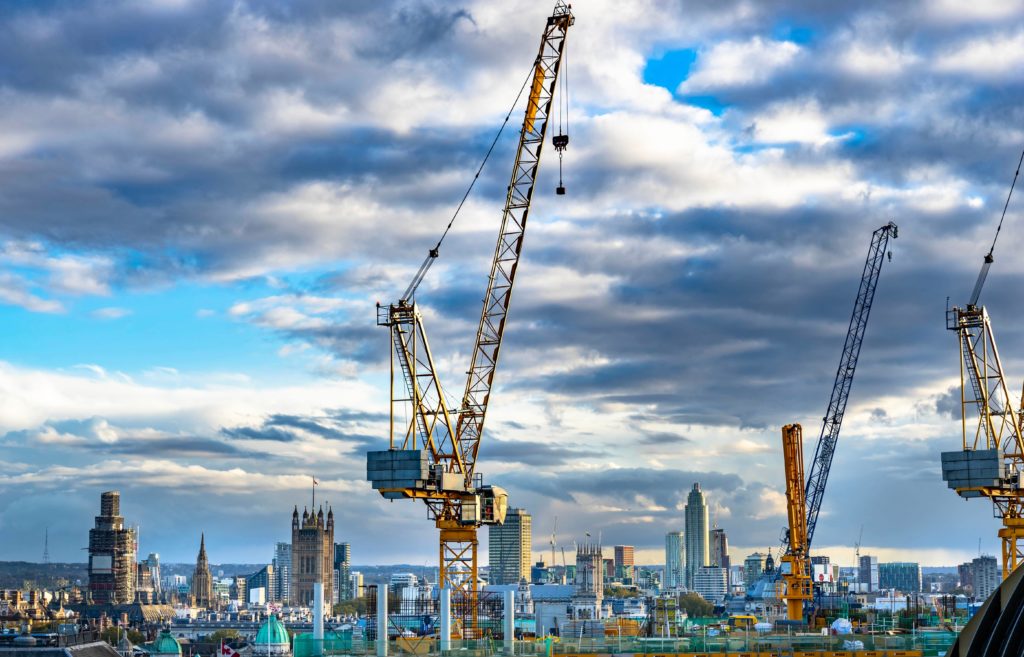Sector - Housing
Construction Output on the Up

Like many others, the construction industry has suffered greatly from the impacts of COVID-19. On 12th November 2020, the Office of National Statistics (ONS) published their latest “Output in the Construction Industry Statistics” which reports a 41.2% decrease in construction output for April 2020, the UK’s first full month in lockdown. However, in each of the following months up to and including September 2020 there has been an increase in the volume of construction work reported. So, what has changed since April 2020 and why are we now seeing a steady increase in construction output?
The rise in construction output can be attributed to a number of factors.
There has been a major shift in the government’s approach to regulations and guidance (both north and south of the border) regarding construction operations. At the start of lockdown, the Scottish Government advised that all construction operations should cease unless they involved what were deemed to be ‘essential’ works. In England, however, construction sites were not advised to close, but there was great confusion about how they could safely stay open when initially the general advice was for everyone to stay at home. It is clear that in Scotland many contractors erred on the side of caution and closed down their construction sites despite not being legally required to do so, rather than facing the possible risk of mandatory shut down for breaching the government advice, and to also ensure the health and safety of their workforce.
As matters currently stand, construction sites are open in the UK, notwithstanding the current national lockdown in England, and in both Scotland and England the recently published COVID-19 tier maps appear to permit construction operations to continue even in the highest level of restrictions. However, as the situation is very fluid, the most up-to-date national guidance should be consulted for any country specific restrictions. The ONS Statistics tend to suggest that the publication of clearer industry guidance and an express confirmation from the UK Government that construction operations can currently progress has allowed for a greater capacity and scale of construction work to be performed. Other recent government legislative changes are likely to have had an impact upon the recent increase in construction operations including, for example, the temporary reduction of the stamp duty and land and buildings transaction tax thresholds which have been put in place until 31 March 2021. Announced in July 2020, these changes are thought to have had an impact on the demand for housebuilding and are supported by the statistics reported by the ONS which show a steady increase in private housebuilding work which is now exceeding pre-lockdown (February 2020) levels following a month on month increase from April to September 2020.
The key construction industry players themselves (employers, contractors, consultants, etc.) and how they have adapted to the “new normal” way of working are also responsible for the continued growth in construction output. When the first lockdown was announced businesses worldwide had no other option but to become increasingly digital and quickly comfortable with remote working or, where required, socially distanced working. Arguably one of the most difficult industries in which to do this is the construction industry given the type of work involved. How can an industry that relies upon individuals working in close proximity to others adapt to working remotely or at a safe distance from one another?
A variety of measures have been adopted. For one, the number of people on a site at any given time is being reduced, and previous on-site or office meetings are now being held virtually over video conferencing facilities. In some cases, even site visits are being conducted virtually. Contractors are also changing the site working hours, working a longer day on site where this is possible. Some are also splitting their workforce into groups working different shifts, with the added benefit that the entire workforce is not being required to self-isolate if a worker in one group were to contract COVID-19 or be required to self-isolate. Contractors are now better equipped to carry out work in accordance with the COVID-19 guidelines, following a period of adjustment required in order to stock up on appropriate PPE, hand washing stations and re-programming of work so that there is minimal contact between workers on site.
We are also seeing a greater push to go contactless and an increased use in the available technology, where possible. Rather than exchanging papers and ID cards to register workers, there are mobile phone apps available which can make the registration process completely contactless. QR codes from the app can then be used for a worker to check in and out of site rather than risk the spread of contamination through keypads. There are now even wearable devices which allow employers to track the distance in between workers in real time to help ensure physical distancing is being maintained. Better planning and better use of technology have undoubtedly been a factor in the growth of construction output.
It is evident that the construction industry is seeing great change in where, when and how they work. Whilst we have highlighted some of those changes, it certainly appears that this is just the beginning and that the industry can look forward to discovering and implementing even more innovative ways of working in the future.
Amy McCalmont, Solicitor at Davidson Chalmers Stewart, Member of Globalaw
If you would like to read more like this, then please click here
Related Articles
More Housing Features
- Can we improve the design of an age-old method of heating?
21 Jul 25
There has been an especially significant rise in the popularity of underfloor heating in the last ten years.
- Why early MEP design collaboration holds the key to smarter buildings
24 Jun 25
Working closely is essential to ensure that all aspects of a building’s design contribute to its overall energy performance.
- Solar on all new homes must align with 1.5 million homes target
20 Jun 25
The Government have said that solar panels will be included in the FHS, leading to installation on the vast majority of new build homes.






